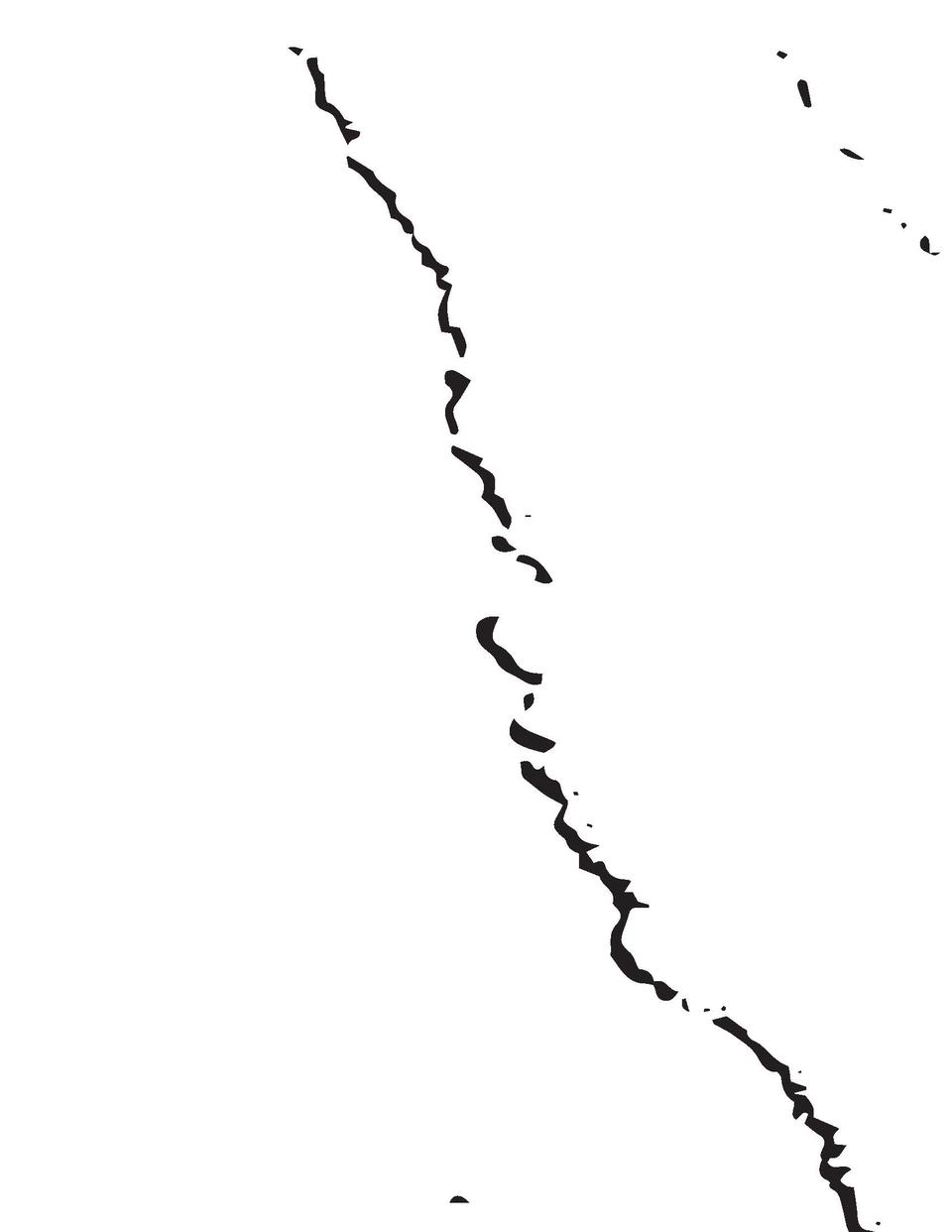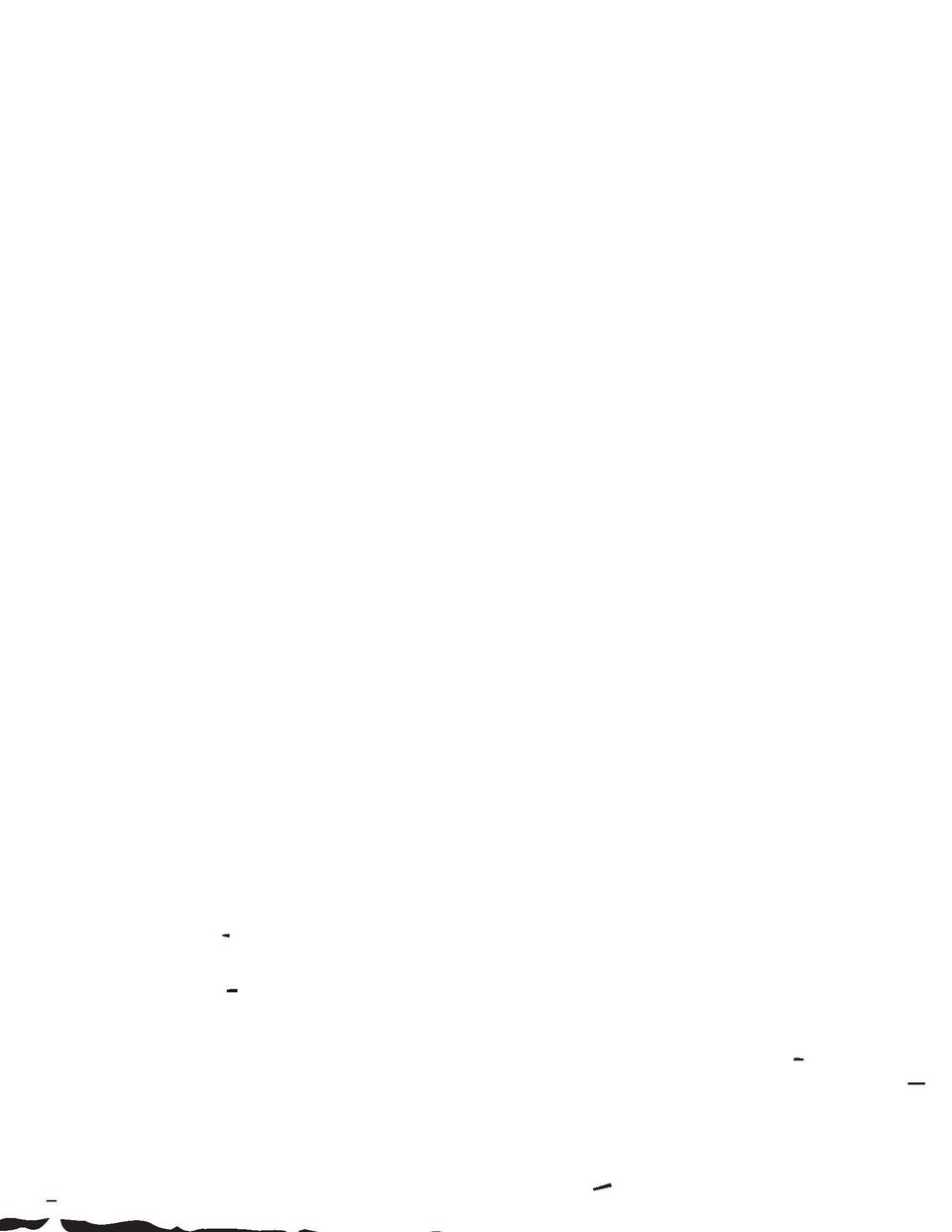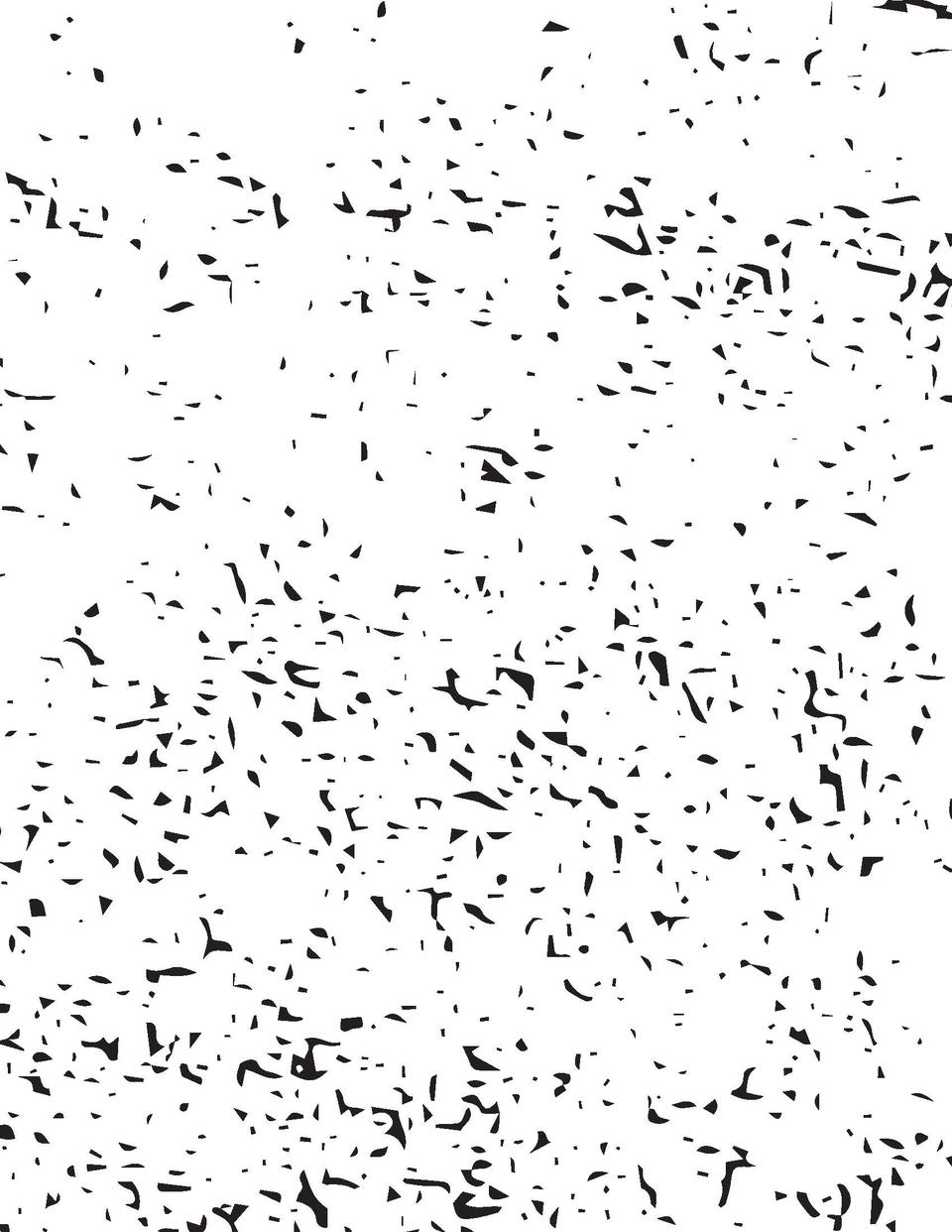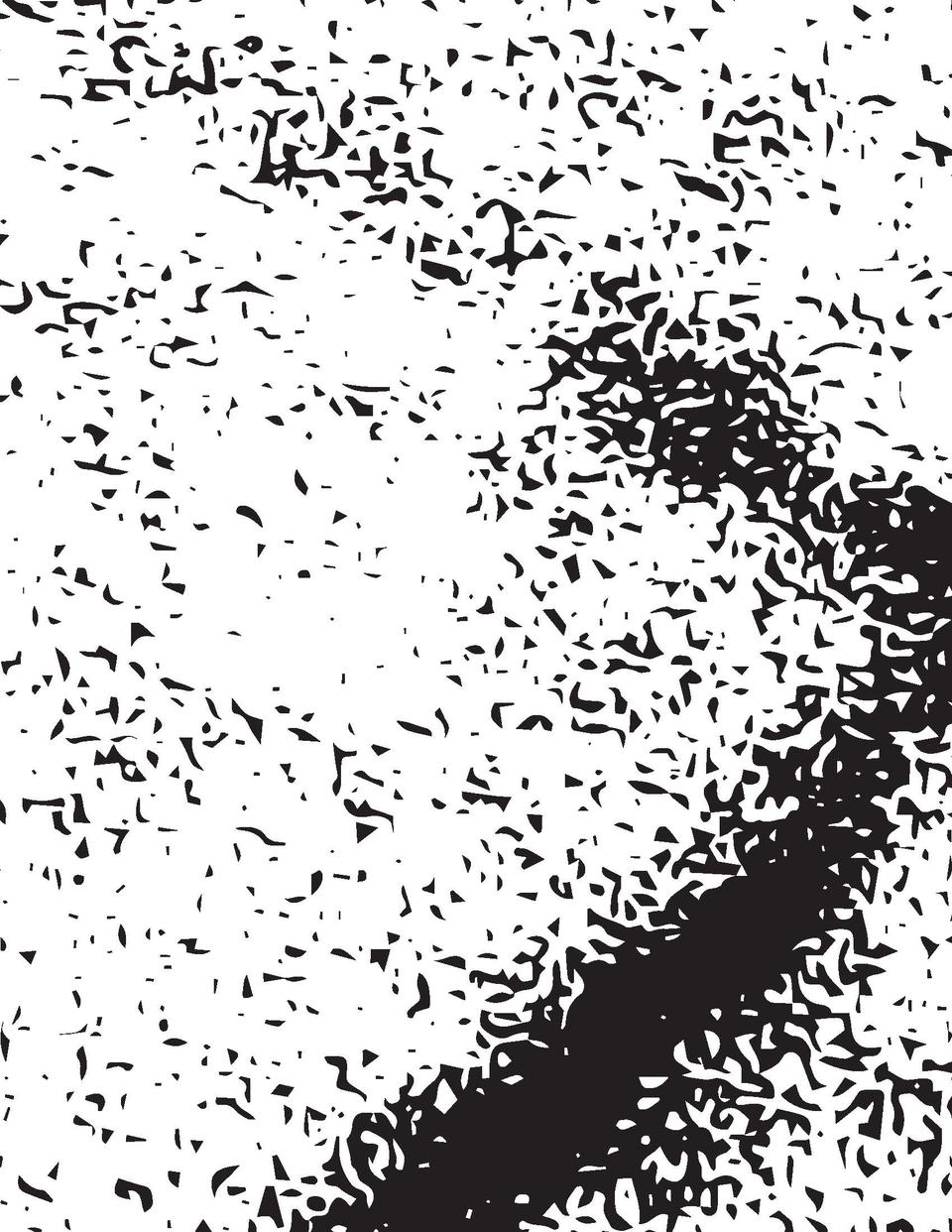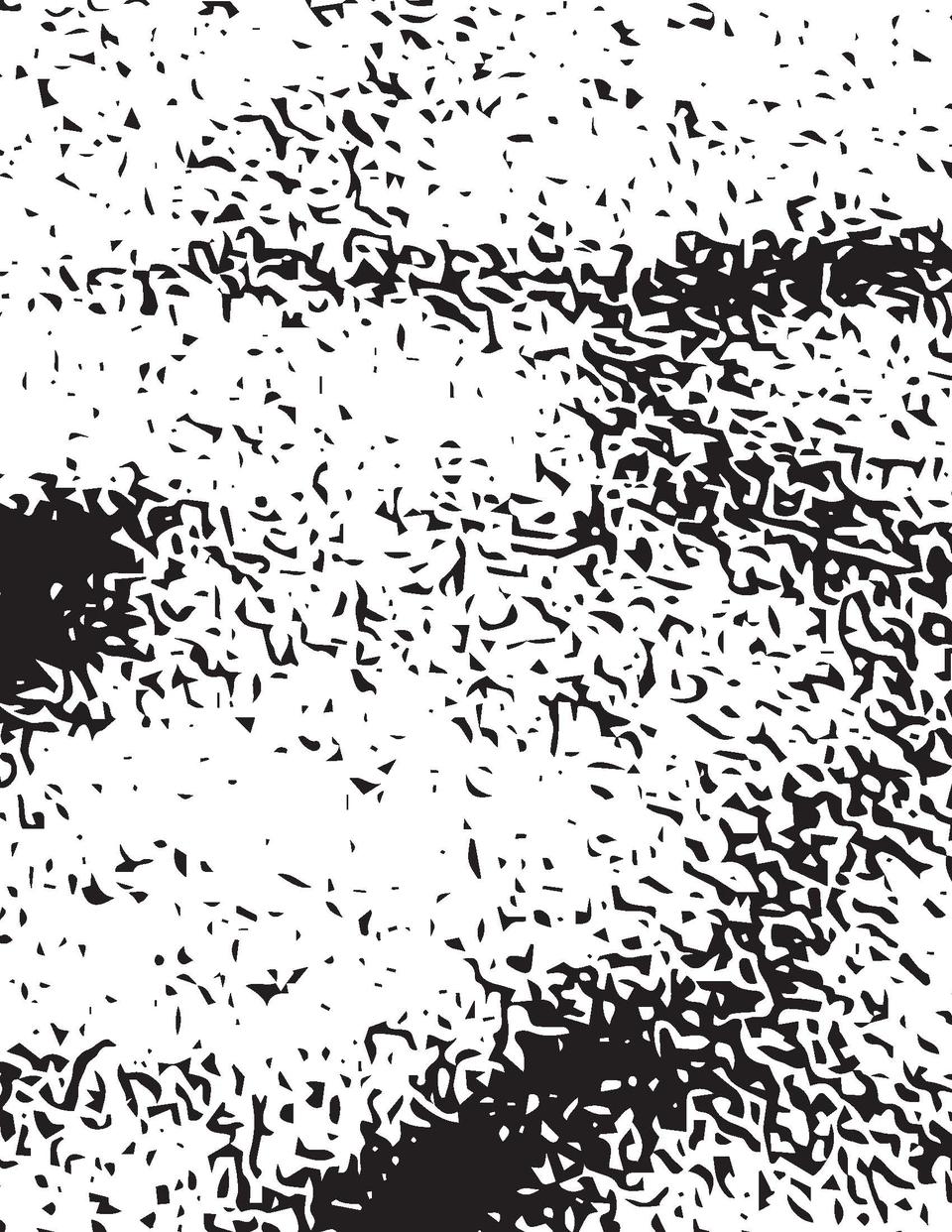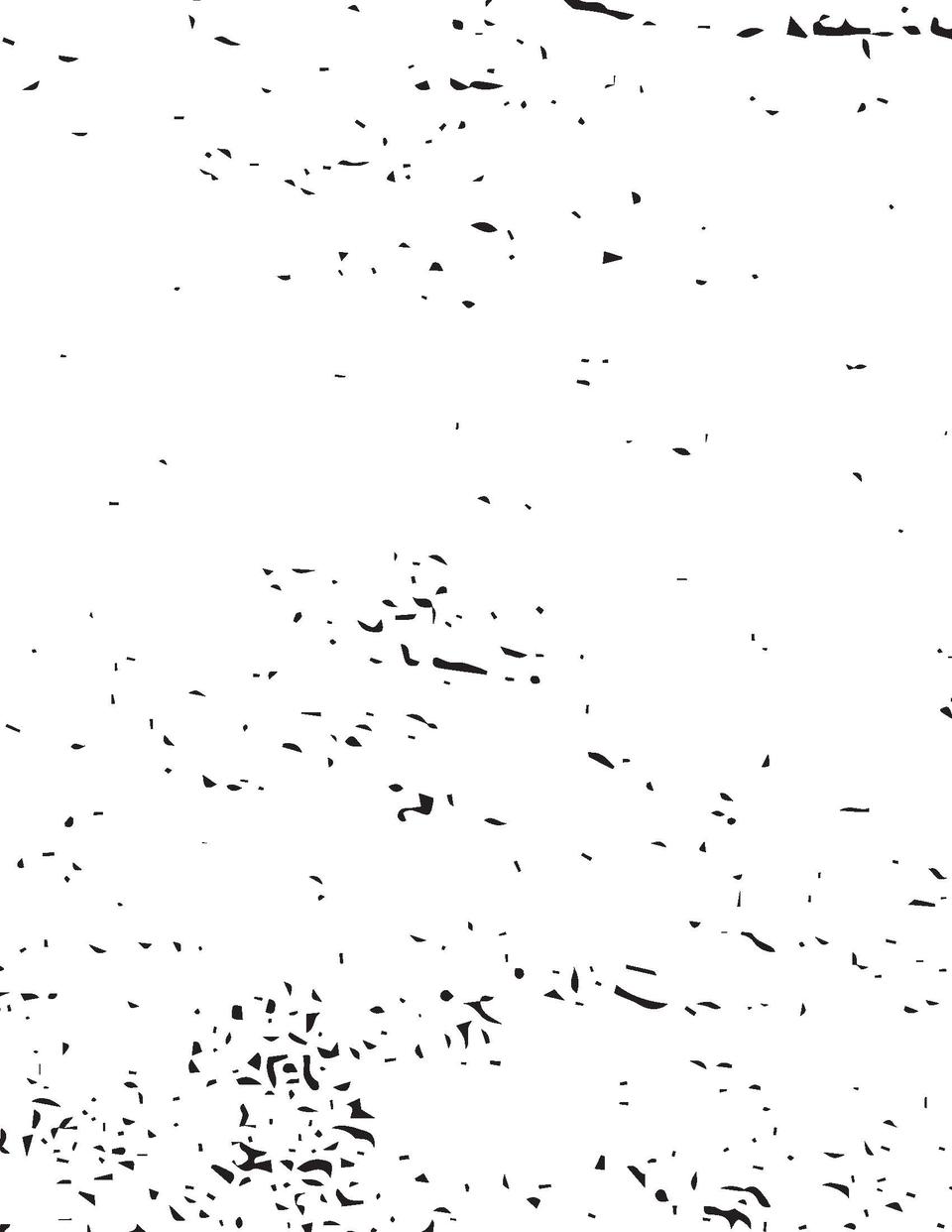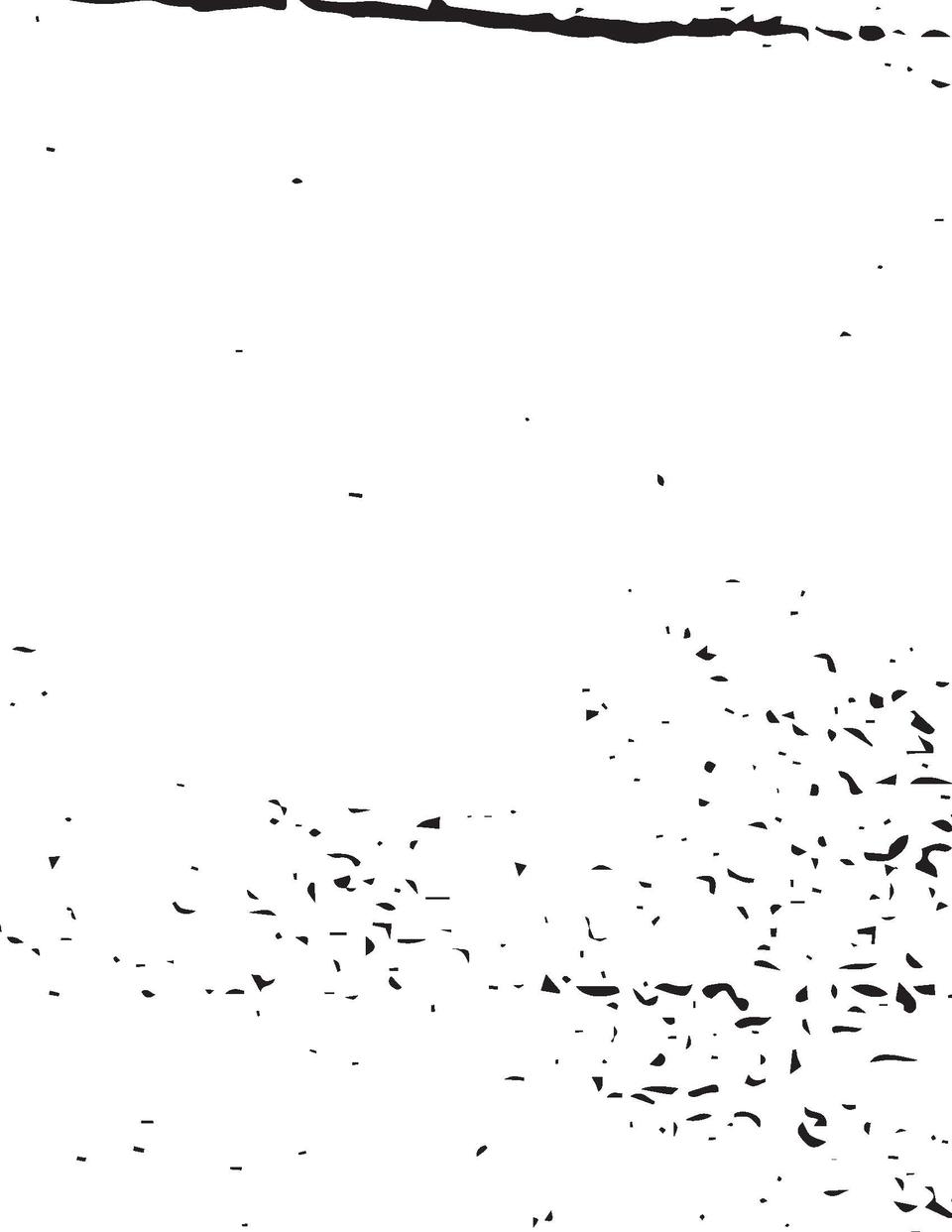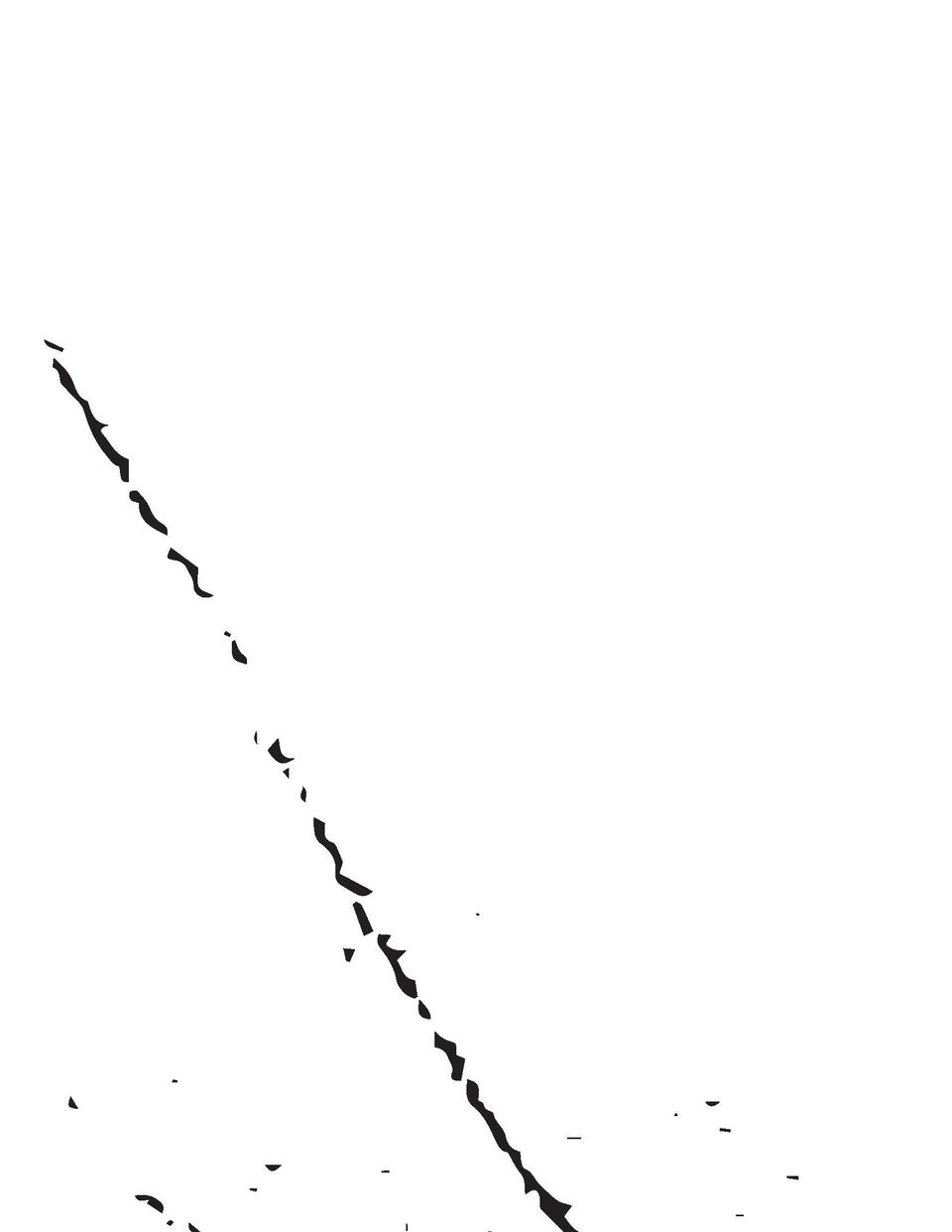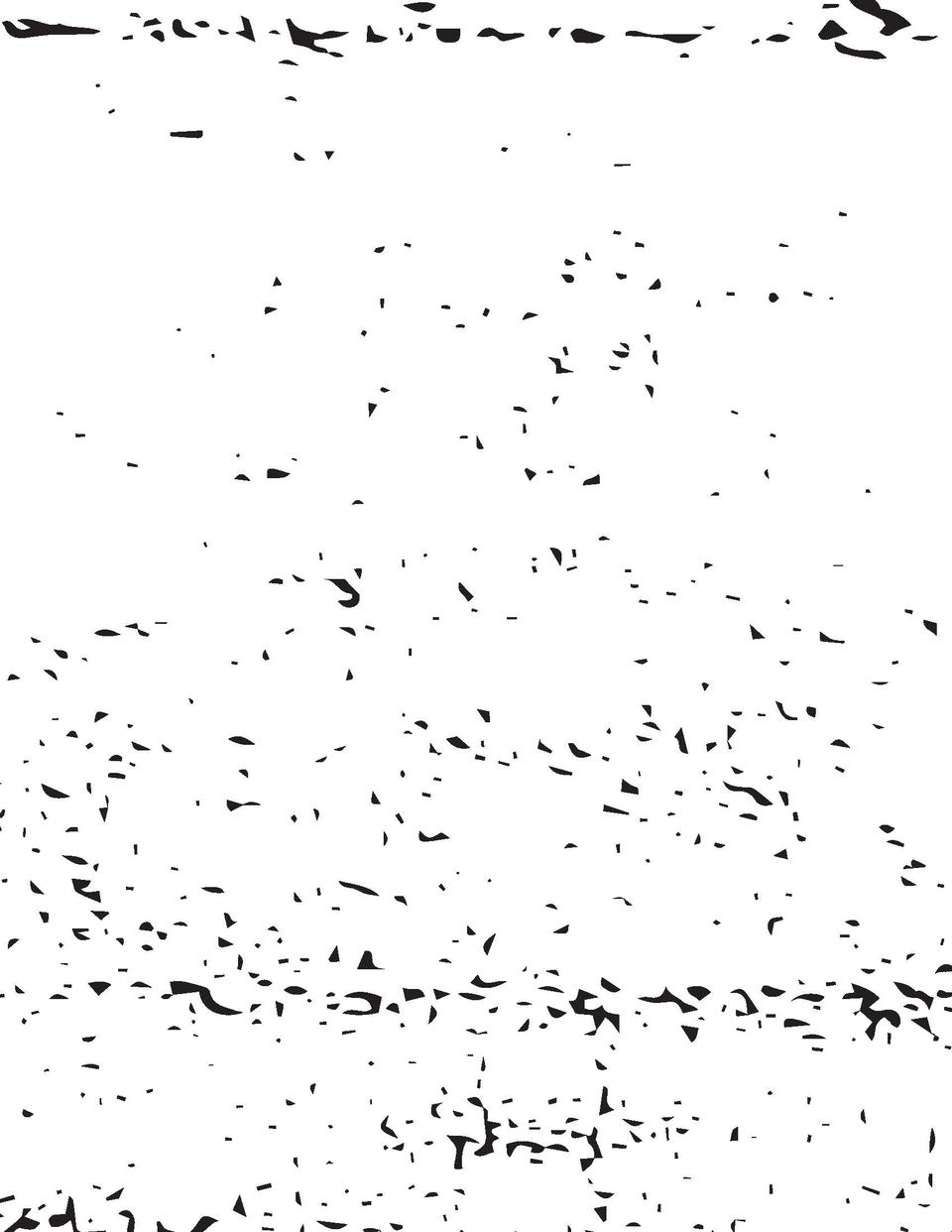Image
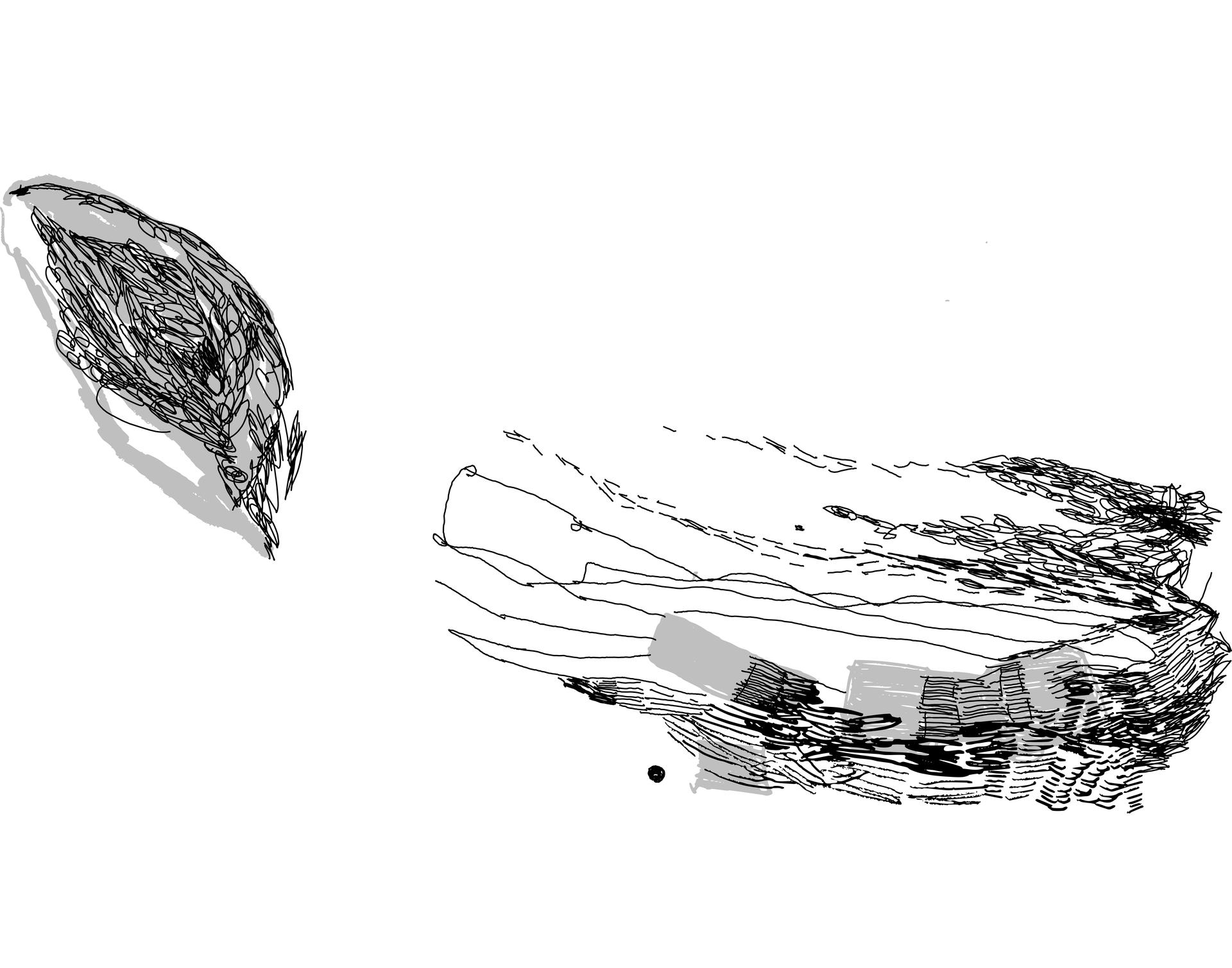
Alexis Hill
ABSTRACT
notes [words] on lists [scans] from diaries [books], printed [drawn]
Barbara Weidle “...did you know from the beginning what you were looking for?”
Pat Steir: “No. Quite the opposite. I didn’t know at all. I only knew, unconsciously, my playing field, which [was] my own mind and my own soul. I only knew a...mental list of questions...Slowly I eliminated questions for myself. Not because they were answered necessarily but simply because they lost their interest as a question.”
[Excerpt from the book] Introduction
Accompanying this text are a series of maps, playing fields, lists, grids, and spreads of questions and answers. The biggest and most difficult questions I probably will never answer, so I have to ask smaller questions, down to the space between each mark or edge. Why does it feel [is it] right to put a line here and not there? The answers are sometimes based on my relationship to skill—how well executed is the technique, which formal qualities and principles can be judged, and what does a specific material mean for the work? But these metrics do not wholly explain rightness or urgency. The smallest unit can be important in its embedded content: letters, stitches, holes, strokes, pixels, the shape of a hole in the pavement. The kind of mark is an individual assumption made for a more expansive whole. Seeking, collecting, and accumulating these marks are avenues for solving and creating problems.
My work is a conscious engagement with traditions of process art that emphasize making over outcome and the desire to create art that cannot be predetermined. The art objects are primarily a by-product of engagement with my material reality. This is hard to pin down and harder to talk about. Historian Kim Grant’s introduction to the circular and sometimes impenetrable creative process is a good summation of one of the essential problems of my art [school] experience: “The artist’s hard work often takes place without a clearly defined goal, thereby rendering the artist’s labors endless, and any results resistant to external evaluation.” One kind of evaluation, however, comes out of ideas of endurance and how my body interacts with material. Have I repeated the individual mark to the point of muscle memory? Can my hand work by itself? If my hand isn’t making active decisions, will another internal logic reveal itself? The inverse is to manipulate the whole to find the granular. Both are correct.
Printmaking allows for this multidirectional exploration. Compositions are formed through buildable, reversible, exponential and cumulative forms of translation of an image to distill it to a fundamental or give it a new kind of coherence. I play small compositional games with myself, looking at the front and back, signifier and signified, architecture and atmosphere, intuitive and measured. Putting those problems into words is another translation [print] to work into or out of.
Image
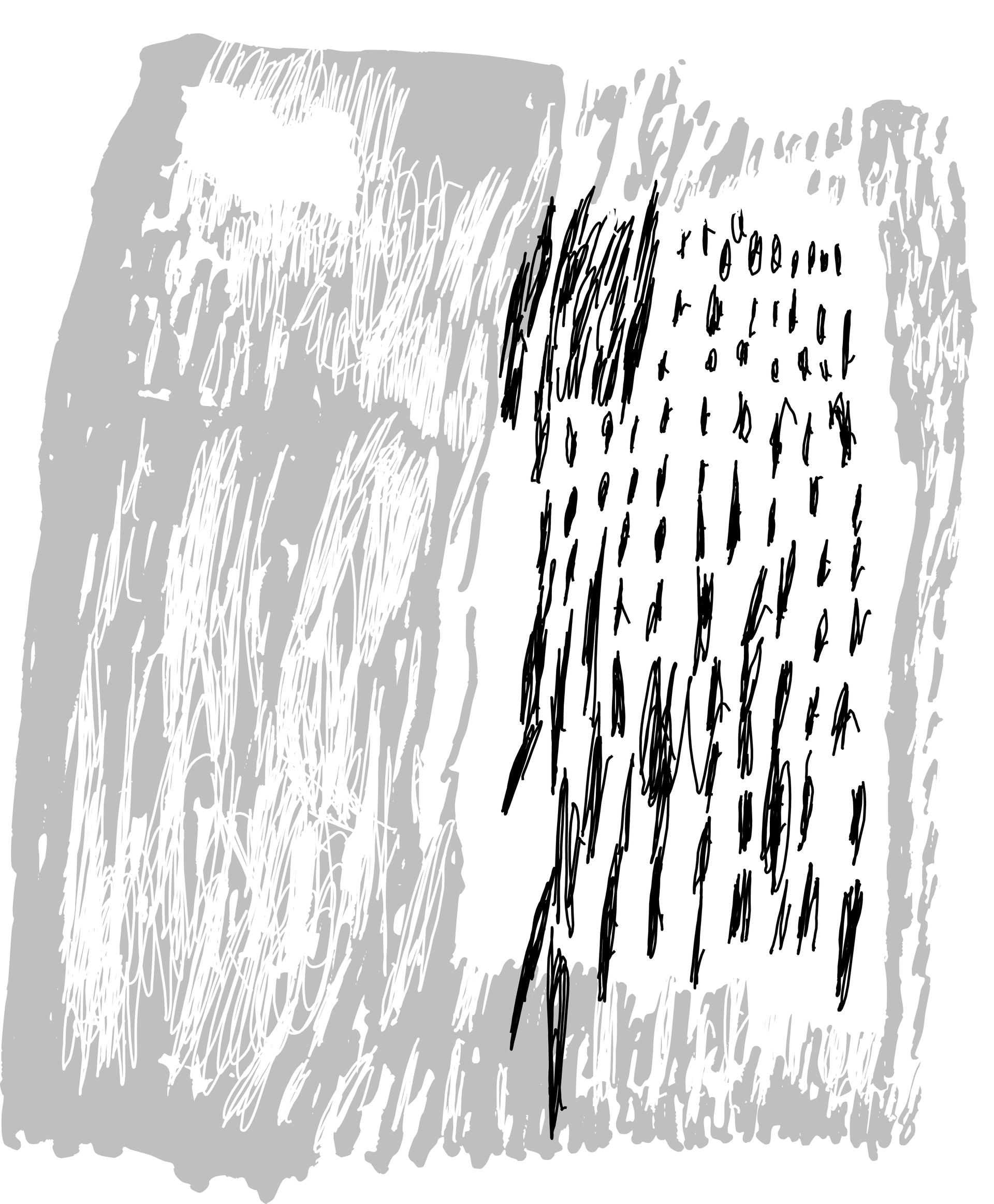
In Through Around
Digital drawing
2021
The following problems are taken from my daily sketchbook and diary, one each month for the last year. I am trying to explain my own organization, strategy, and questions and also set up new ones. It is an exercise in knot building and knot unraveling to parallel the macro- and micro-level of the physical work. The threads come from me [past, present, future] and the conversation between me, the mark, the whole and the viewer. I am thinking about forms of visual thinking like charts and graphs and concrete poetry. A well-established body of cultural criticism around visual “language,” diagrams and forms of knowledge production can help unravel the means and ends of my practice. In the Social Psychology of Organizing, Karl Weik lays out some elements of organization that resonate with me and may be considered as you read on:
“Equivocal information triggers organizing.” Looking at abstract, ambiguous art leads to my (and your) disturbances about the underlying structure and meaning.
“Efforts to stabilize meanings for equivocal displays typically involve the efforts of two or more people.” This is me and The Viewer, trying to make sense in parallel.
“Interdependencies among people are the substance of organizations, but these interdependencies are fluid and shifting.” This is about organizations as entities and not a series of adjacent marks, but I like to imagine that each bit of ink relies on the other to hold up the greater system and that those visual relationships are never static. This is comforting and also scary.
November 2020
Image

[Excerpts from the book] Notes - November 2020
searching for that interesting thing, that thing that I can't put down
I wrote this while in Mexico visiting my dying grandfather. I was utterly disinterested in most of what I was making. My emphasis on process shifted from a conceptual strategy and a genuine research direction to a way of mindlessly engaging my hands. I had hand surgery and had a wisdom tooth removed that same month. There were many reasons to submit to apathy. I created new, more convoluted, chance-based drawing strategies to absolve me of conceptual responsibility or spark some kind of new interest. I told myself my hand made it harder to work even though it was my left and I am right handed. I drew trees from life because they are easy and don’t move and even if I’m not really paying attention to a particular tree I can draw a convincing tree because I have seen a lot of trees.
I think now, after some distance, that I didn’t write this note aspirationally. I was not committed to a search, which is completely okay. I am sometimes only sort of interested. More important than being interested is knowing I won’t always be. Better to make the things I already have incrementally more important and to be okay with doing less; untangling the not-so-symbiotic relationship between artistic labor and freedom. Or as Bojana Kunst describes, “the kind of [work] whose level of dedication and intensity leaves no further room for life,” a practice-forward life strategy that leaves no room for the possibility of art as not-work, not-useful or the result of coincidence and failure. I think this is a more sustainable relationship to being a maker than trying to cultivate obsession or buying into normative exceptionality. Grant describes the mythic artist personality in her chapter on “Artist Process as a Means of Self Realization,” as the popular identification of the artist as a member of society “unhampered by the limitations imposed on workers in a modern industrial capitalist society,” a free individual determining their own production and potential. This was never true, of course, but if it were I definitely would never reach self-realization.
I want to be a certain level of hampered and I also want to embrace entropy. I guess what I mean about interest is that sometimes I have it, sometimes I don’t, and sometimes it is important to do nothing at all about it.
There is plenty to captivate me within the structures of the everyday, as in the “small theatrical arenas” of our urban environment construction sites, as Robert Morris describes. Particularly, there is an emphasis on raw material and random distribution in these areas that is strangely nature-adjacent. Concrete, brick, gravel, rebar and tar are generally not dyed, not pretending to be anything they are not, and to me they have the kind of natural coloristic harmony of landscape painting. My interest in roads, infrastructure and interstitial urban spaces is a recognition of a sometimes overlooked area of beauty —one that is characterized by thankless, physical work and markedly outside of a studio-based artistic labor. The forms of the road are beautiful and the work to make it extraordinary. The road is interesting and I can’t put it down.
“It is the potentiality of doing less that gives tenacity to human activity and gives art the permanent and autonomous power to rethink the borders between the various types of human experience: art actually opens the gateway to this useless confirmation of life.” - Francien van Westrenen
Image
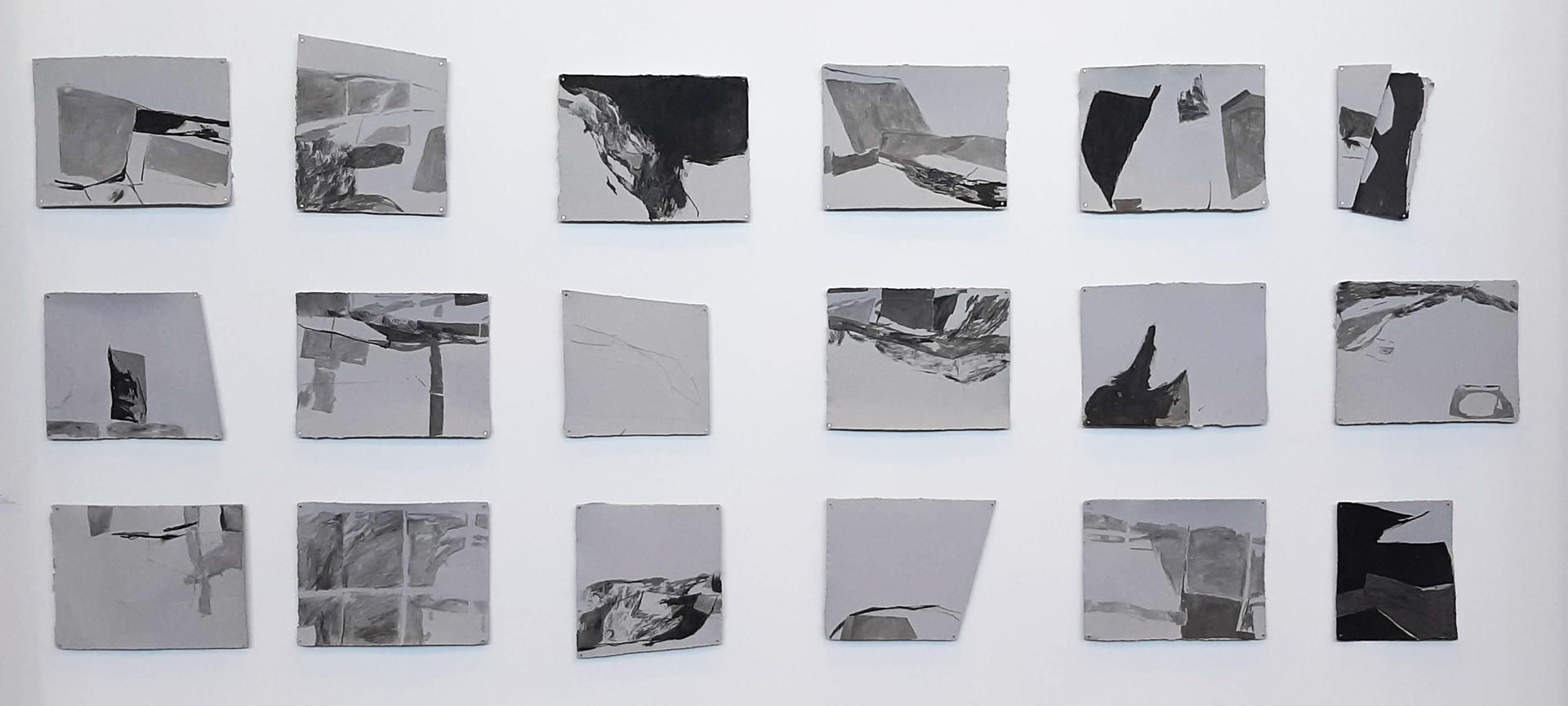
I Cut Up This Map So You Couldn't Find Me
Sumi ink, embossing and graphite on recycled cotton rag paper
~7' x 18', individual units variable
2021
Image
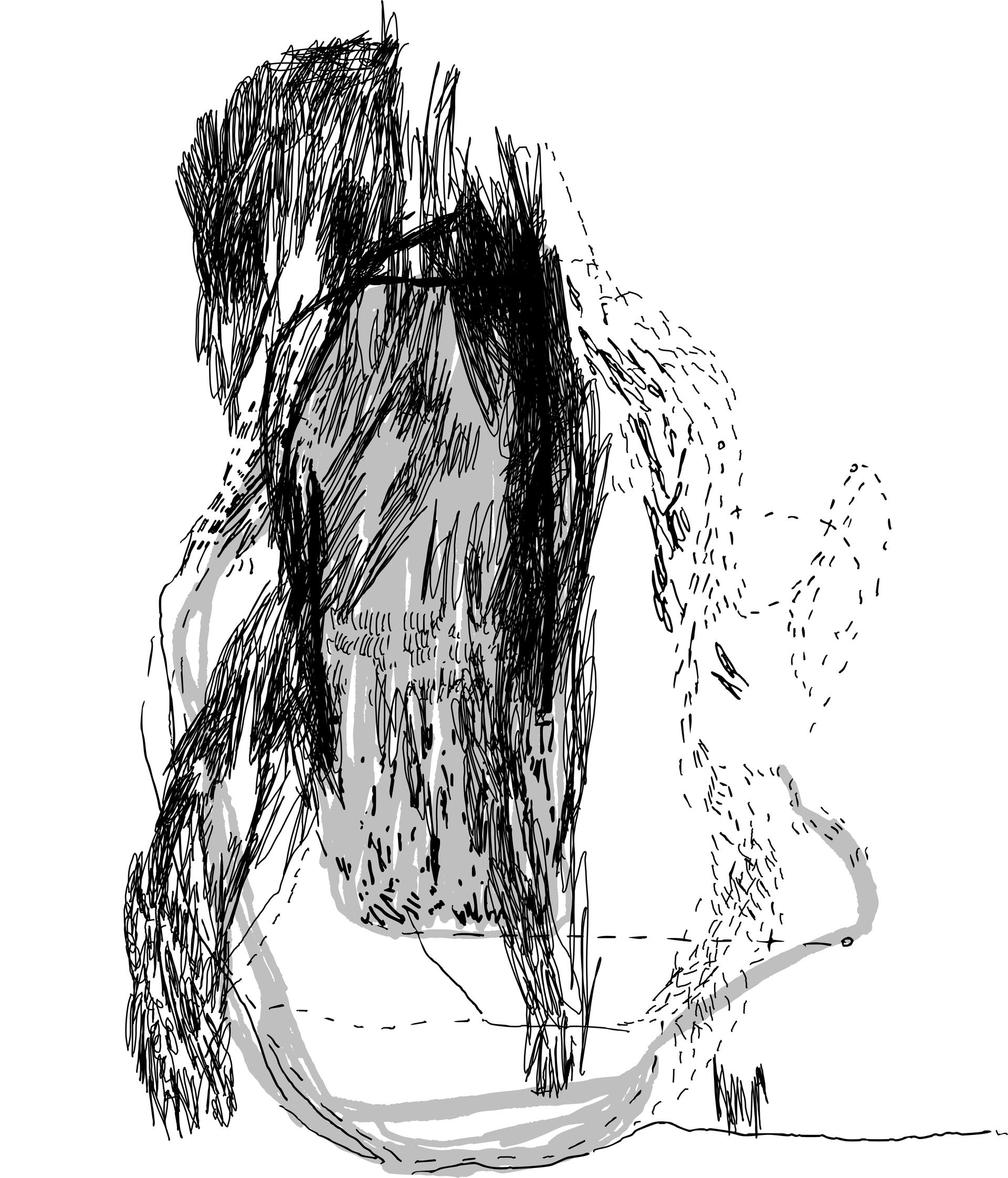
Over Out Through
Digital drawing
2021
March 2021
Image

[Excerpts from the book] Notes - March 2021
telling the same story in a different way
Someone I know described a series of prints this way. Or maybe this was a goal for their next series. We speak about series often, and what guiding principles or games or questions cohere multiple prints. A good strategy is trial and error of basic principles of design and perception. Contemporary research has pointed out vagueness in many of the ideas and added much needed scope to the field of perception, but I find a lot of value in Gestalt organizational principles even after so many years. There was a time [the middle of the night] I fell into a hole of reading Max Wertheimer’s 1923 “Investigations on Gestalt Principles” and found the opening anecdote a charming story of different ways. He lays out a series of daily observations that include unconscious organization and describes the alternate, often uncomfortable, ways we could instead order information about our environment. We see the sky and trees outside and know they are many colors but do not perceive the sky and trees as the sum of those colors. We could count them, barring physical limitations, but to “have a group of 327 colors” is generally an unnatural way to organize the view. But then he writes an aside about a particular grouping he observes:
“(And what a remarkable process it is, when for once something like that visual integration succeeds in happening. What astonishment when, after looking for a long time, after considerable efforts with a very unrealistic set [Einstellung], I discover that there at the window, sections of the dark frame, together with a smooth branch, form a capital letter N.)”
All I can hope for is this remarkable process. Sometimes I sit in front or to the side of a half finished thing and try to flatten it with my eyes or push space back to another imaginary plane to tell a story in the different way. I like story as a string to tie around all these bundles of abstraction. Story includes beginning, middle and end, sometimes, but can comprise color, character, a feeling, or the letter N; stories without narrative and series without seriality.
Image

During Upon
Digital drawing
2021

